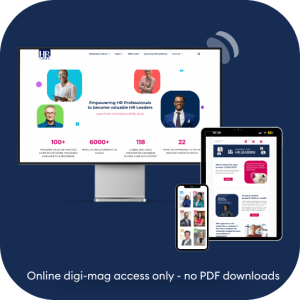Navigating the Shift to Digital: Enhancing Efficiency and Satisfaction in Payroll Management
In the dynamic landscape of business operations, the evolution of payroll systems stands out as a testament to the relentless pursuit of efficiency, accuracy, and employee satisfaction. Gone are the days when payroll was a cumbersome process bogged down by manual calculations and paper checks. Today, the integration of modern solutions like digital paystubs is revolutionizing how businesses manage payroll, promising a streamlined approach that benefits both employers and employees alike. This article delves into the transformation of payroll systems over the years and underscores the importance of embracing contemporary solutions to bolster employee satisfaction and streamline HR processes.
From Ledgers to Cloud: The Historical Transformation of Payroll
The journey of payroll systems from manual to digital is a fascinating tale of technological advancement. Initially, payroll processing was a labor-intensive task involving hand-written ledgers and mechanical calculators. This method was not only time-consuming but also prone to errors, leading to employee dissatisfaction and significant administrative burdens.
The introduction of computerized payroll systems in the late 20th century marked a significant leap forward. These systems allowed for the automation of basic calculations and record-keeping, reducing errors and saving valuable time. However, they were often expensive and required substantial IT infrastructure, making them accessible primarily to larger corporations.
Embracing Digital Solutions: The Rise of Online Payroll Services
The advent of the internet and cloud computing has further transformed payroll processing, democratizing access to sophisticated payroll solutions. Online payroll services now offer businesses of all sizes a way to manage payroll efficiently and securely. These platforms can automate nearly every aspect of payroll, from calculating taxes and deductions to generating year-end reports. Moreover, they provide the flexibility to access payroll data from anywhere, at any time, which is particularly beneficial in today’s increasingly remote and mobile workforce.
Digital Paystubs: A Gateway to Employee Satisfaction
A pivotal component of modern payroll solutions is the digital paystub. Digital paystubs replace traditional paper checks and stubs, offering a more convenient, secure, and environmentally friendly option. Employees can access their paystubs online through secure portals, allowing them to view their earnings, deductions, and tax information with ease. This transparency and accessibility are crucial for employee satisfaction, as they empower employees to manage their finances more effectively and resolve any issues promptly.
Digital paystubs also facilitate a smoother communication channel between HR departments and employees. Queries regarding discrepancies or clarifications can be addressed quickly, ensuring a more harmonious workplace environment. Additionally, digital paystubs contribute to a company’s sustainability goals by reducing paper usage, further enhancing corporate social responsibility efforts.
Streamlining HR Processes: Beyond Payroll
The integration of modern payroll solutions extends benefits beyond simplifying payroll itself. These systems can seamlessly connect with other HR functions, such as time tracking, benefits management, and compliance reporting. By centralizing these processes, businesses can achieve a holistic view of their human resources operations, enabling more informed decision-making and strategic planning.
Moreover, the data generated through digital payroll systems can provide valuable insights into labor costs, employee turnover, and compensation trends. This data-driven approach can help businesses optimize their workforce strategies, align them with overall corporate objectives, and enhance competitiveness in their respective industries.
The Future of Payroll: Anticipating the Next Wave of Innovation
As we look to the future, the evolution of payroll systems is poised to continue, driven by advancements in artificial intelligence, machine learning, and blockchain technology. These technologies promise to bring even greater efficiencies, security, and personalization to payroll processes. For instance, AI could automate more complex tasks, such as compliance checks and personalized benefits administration, while blockchain technology could offer unprecedented security and transparency in payroll transactions.
Enhanced Employee Experience through Personalization
Modern payroll solutions are increasingly focusing on personalizing the employee experience. This involves more than just digitizing paystubs; it’s about offering customizable options for payment frequencies, retirement contributions, and even benefits administration. Such personalization not only enhances employee satisfaction but also empowers workers by giving them greater control over their financial and professional lives.
Conclusion: A Strategic Imperative for Modern Businesses
The transformation of payroll systems from manual processes to sophisticated digital solutions encapsulates the broader narrative of technological progress in business operations. By integrating modern payroll solutions, businesses can enhance employee satisfaction, streamline HR processes, and position themselves for future innovation. In today’s fast-paced business environment, embracing these advancements is not just an operational necessity but a strategic imperative.
Guest writer.













